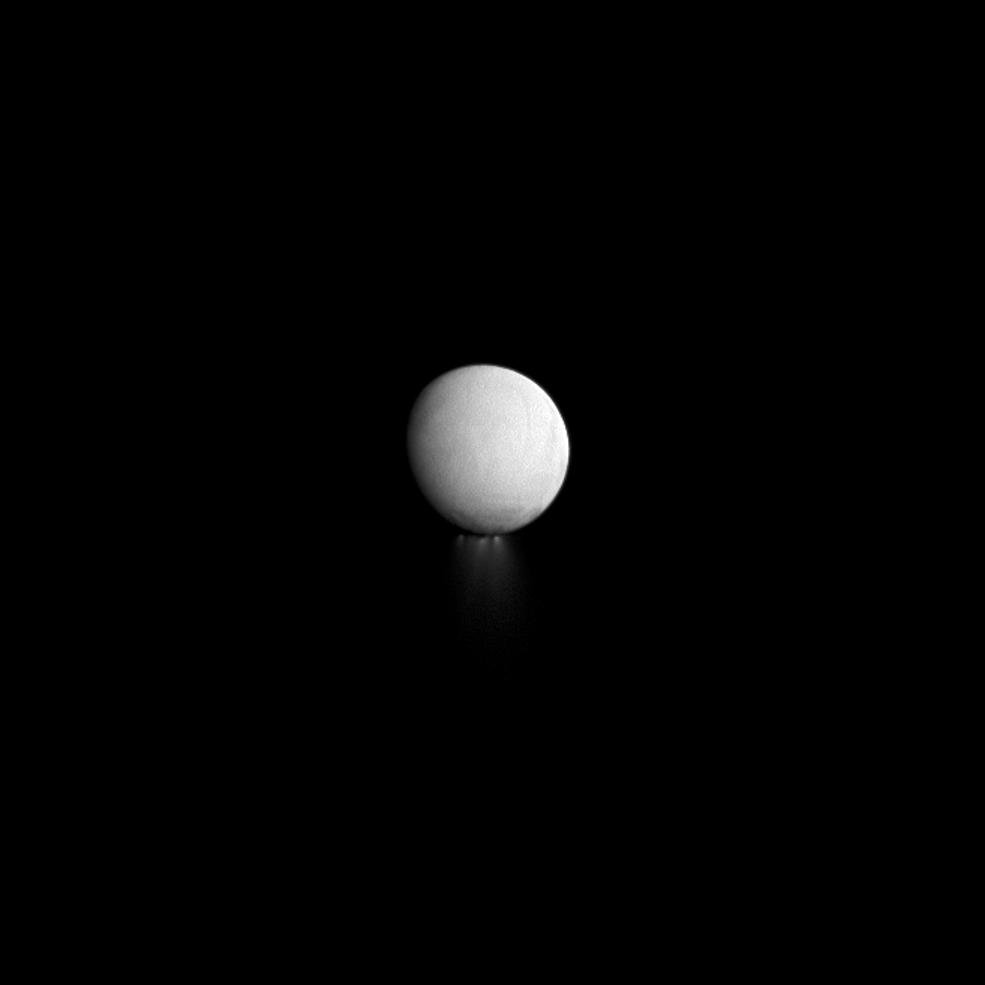Sunset on the Jets

| PIA Number | PIA14642 |
|---|---|
| Language |
|
As the long winter night deepens at Enceladus' south pole, its jets are also progressively falling into darkness. The shadow of the moon itself is slowly creeping up the jets making the portions closest to the surface difficult to observe by the Cassini spacecraft.
Cassini looks toward the night side of Enceladus (313 miles, or 504 kilometers across) in this image. Enceladus is lit by light reflected off Saturn rather than by direct sunlight.
This view looks toward the Saturn-facing hemisphere of Enceladus. North on Enceladus is up. The image was taken with the Cassini spacecraft narrow-angle camera on Sept. 24, 2012 using a spectral filter sensitive to wavelengths of near-infrared light centered at 930 nanometers.
The view was acquired at a distance of approximately 452,000 miles (728,000 kilometers) from Enceladus and at a Sun-Enceladus-spacecraft, or phase, angle of 170 degrees. Scale in the original image was 3 miles (4 kilometers) per pixel. The image was magnified by a factor of three to enhance the visibility of jets.
The Cassini-Huygens mission is a cooperative project of NASA, the European Space Agency and the Italian Space Agency. The Jet Propulsion Laboratory, a division of the California Institute of Technology in Pasadena, manages the mission for NASA's Science Mission Directorate in Washington. The Cassini orbiter and its two onboard cameras were designed, developed and assembled at JPL. The imaging team is based at the Space Science Institute, Boulder, Colo.
For more information about the Cassini-Huygens mission visit http://saturn.jpl.nasa.gov or http://www.nasa.gov/cassini . The Cassini imaging team homepage is at http://ciclops.org .
Credit: NASA/JPL-Caltech/Space Science Institute
